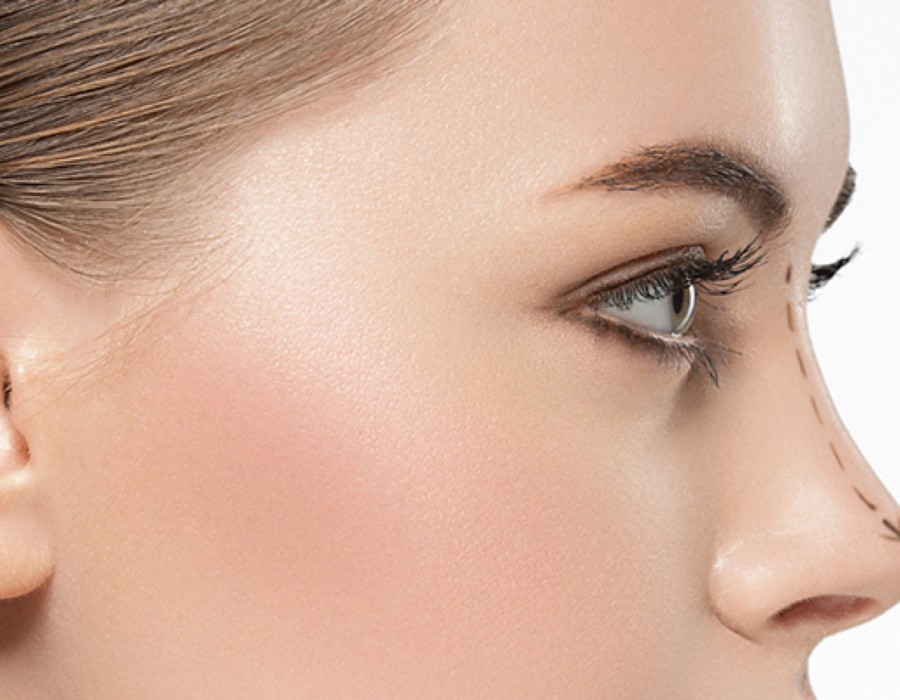Rhinoplasty, commonly known as a nose job, is a popular cosmetic procedure designed to reshape the nose for aesthetic or functional purposes. In Dubai, a city renowned for its state-of-the-art medical facilities and skilled practitioners, rhinoplasty has become a sought-after option for those looking to enhance their facial harmony or address nasal issues. This article provides a comprehensive overview of the basics of Rhinoplasty in Dubai, covering the procedure, benefits, and what to expect.
What is Rhinoplasty?
Rhinoplasty is a surgical procedure aimed at modifying the nose’s structure to achieve desired aesthetic or functional outcomes. The surgery can involve reshaping the bone, cartilage, and skin of the nose. It is performed for various reasons, including:
- Aesthetic Enhancement: To improve the nose’s appearance and balance it with other facial features.
- Functional Improvement: To address breathing difficulties or other nasal function issues.
- Reconstructive Purposes: To repair the nose after trauma or congenital anomalies.
Types of Rhinoplasty
Understanding the different types of rhinoplasty helps in determining the right approach for your needs:
1. Cosmetic Rhinoplasty
Cosmetic rhinoplasty focuses on enhancing the appearance of the nose. Common goals include:
- Size Adjustment: Reducing or augmenting the nose’s size to better fit the face.
- Nasal Tip Refinement: Shaping or narrowing the tip of the nose.
- Bridge Correction: Smoothing out bumps or irregularities along the nasal bridge.
2. Functional Rhinoplasty
Functional rhinoplasty aims to improve nasal function and address breathing issues. This may involve:
- Deviated Septum Correction: Straightening a misaligned septum to enhance airflow.
- Treatment of Nasal Obstructions: Addressing issues like enlarged turbinates or nasal polyps that hinder breathing.
3. Reconstructive Rhinoplasty
Reconstructive rhinoplasty is used to restore the nose’s structure and function following injury or congenital defects. This complex procedure involves advanced techniques to rebuild the nasal framework.
The Rhinoplasty Procedure in Dubai
1. Initial Consultation
The journey begins with a consultation with a qualified plastic surgeon in Dubai. During this meeting, you will:
- Discuss Your Goals: Clearly outline your aesthetic or functional objectives.
- Review Medical History: Provide details about your health, previous surgeries, and any nasal issues.
- Plan the Surgery: The surgeon will create a tailored surgical plan using imaging and modeling techniques.
2. Anesthesia Options
Rhinoplasty is performed under anesthesia to ensure comfort. Options include:
- General Anesthesia: You will be completely unconscious during the surgery.
- Local Anesthesia with Sedation: The nose area is numbed, and you are sedated but awake.
The choice of anesthesia depends on the procedure’s complexity and your preferences.
3. Surgical Techniques
There are two main techniques used in rhinoplasty:
- Open Rhinoplasty: An incision is made across the columella (the tissue between the nostrils), allowing for better visibility and access to the nasal structures. This method is often used for more complex procedures.
- Closed Rhinoplasty: Incisions are made inside the nostrils, leaving no visible scars. This approach is typically used for less extensive procedures and often results in a faster recovery.
4. Post-Operative Care
Proper post-operative care is crucial for a successful recovery. Key aspects include:
- Managing Swelling and Bruising: Applying ice packs and keeping your head elevated can help reduce swelling and bruising.
- Following Activity Restrictions: Avoid strenuous activities and heavy lifting during the initial recovery period.
- Attending Follow-Up Appointments: Regular visits to your surgeon are essential to monitor healing and remove any splints or packing.
Recovery and Results
1. Immediate Recovery
After surgery, you can expect some swelling and bruising around the eyes, which typically improves within a few weeks. Most patients can return to work or daily activities within one to two weeks, though the full recovery period may be longer.
2. Long-Term Healing
The final results of rhinoplasty can take several months to fully reveal themselves. Swelling gradually subsides, and the new shape of the nose becomes more apparent over time. Patience is important, as the healing process continues for up to a year.
Risks and Considerations
As with any surgery, rhinoplasty carries certain risks, including:
- Infection: Rare but possible, requiring prompt treatment if it occurs.
- Scarring: Minimal with closed rhinoplasty but possible with open rhinoplasty.
- Unanticipated Results: In some cases, the results may not meet expectations, potentially necessitating revision surgery.
Discuss these risks with your surgeon during the consultation to understand how they may impact your procedure.
Costs of Rhinoplasty in Dubai
The cost of rhinoplasty in Dubai varies based on factors such as the complexity of the surgery, the surgeon’s experience, and the clinic’s location. On average, prices range from AED 20,000 to AED 50,000. Ensure you discuss the total cost during your consultation and understand what is included in the price.
Why Choose Dubai for Rhinoplasty?
Dubai is an attractive destination for rhinoplasty due to:
- Advanced Medical Facilities: Access to the latest technology and surgical techniques.
- Experienced Surgeons: Many surgeons in Dubai are internationally trained and highly skilled in rhinoplasty.
- Luxurious Recovery Options: Enjoy a comfortable recovery in a city known for its high standards of care and amenities.
Conclusion
Rhinoplasty in Dubai offers an opportunity to reshape your nose with the support of skilled professionals and top-notch facilities. By understanding the basics of rhinoplasty, including the types of procedures, the surgical process, recovery, and costs, you can make an informed decision and achieve your desired results. With Dubai’s exceptional medical standards, your rhinoplasty journey can be a rewarding experience that enhances both appearance and function.





Comments